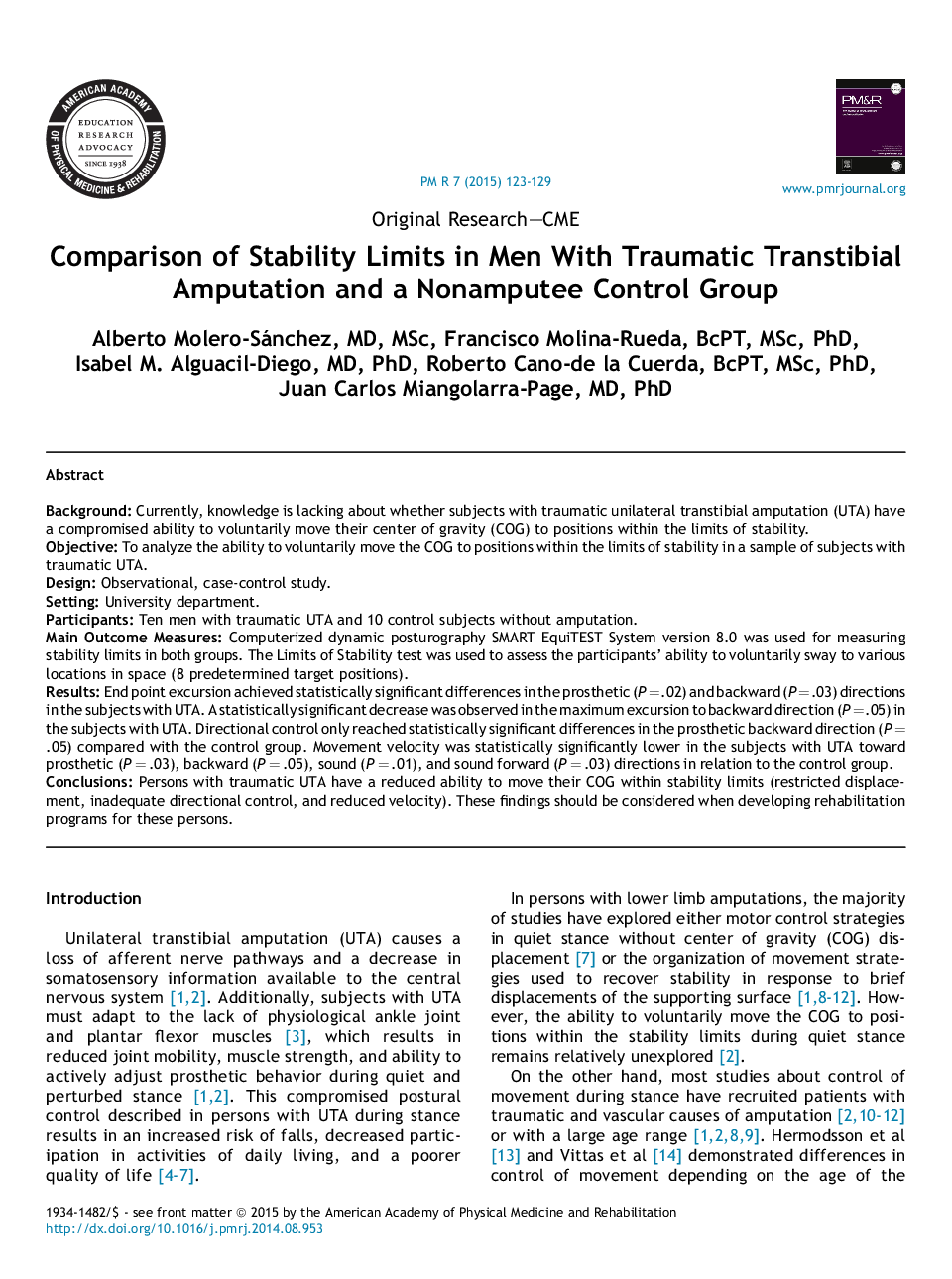| Article ID | Journal | Published Year | Pages | File Type |
|---|---|---|---|---|
| 5874255 | PM&R | 2015 | 7 Pages |
BackgroundCurrently, knowledge is lacking about whether subjects with traumatic unilateral transtibial amputation (UTA) have a compromised ability to voluntarily move their center of gravity (COG) to positions within the limits of stability.ObjectiveTo analyze the ability to voluntarily move the COG to positions within the limits of stability in a sample of subjects with traumatic UTA.DesignObservational, case-control study.SettingUniversity department.ParticipantsTen men with traumatic UTA and 10 control subjects without amputation.Main Outcome MeasuresComputerized dynamic posturography SMART EquiTEST System version 8.0 was used for measuring stability limits in both groups. The Limits of Stability test was used to assess the participants' ability to voluntarily sway to various locations in space (8 predetermined target positions).ResultsEnd point excursion achieved statistically significant differences in the prosthetic (P = .02) and backward (P = .03) directions in the subjects with UTA. A statistically significant decrease was observed in the maximum excursion to backward direction (P = .05) in the subjects with UTA. Directional control only reached statistically significant differences in the prosthetic backward direction (P = .05) compared with the control group. Movement velocity was statistically significantly lower in the subjects with UTA toward prosthetic (P = .03), backward (P = .05), sound (P = .01), and sound forward (P = .03) directions in relation to the control group.ConclusionsPersons with traumatic UTA have a reduced ability to move their COG within stability limits (restricted displacement, inadequate directional control, and reduced velocity). These findings should be considered when developing rehabilitation programs for these persons.
